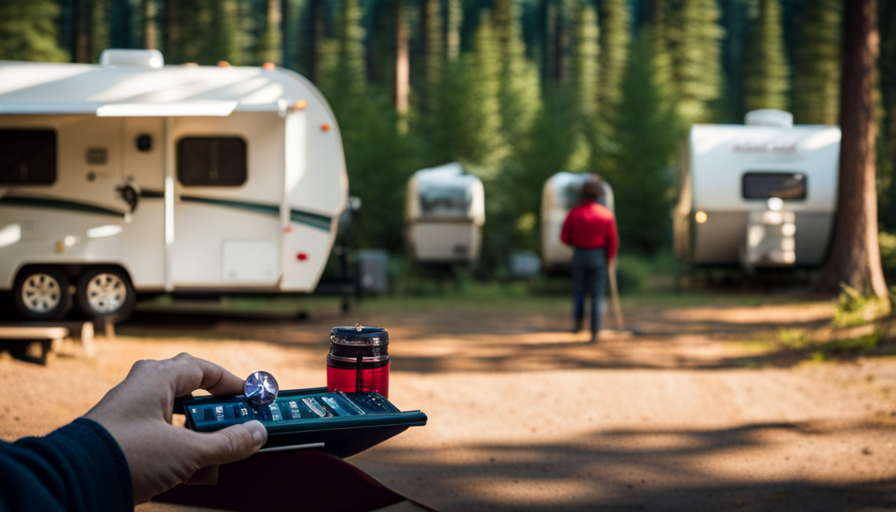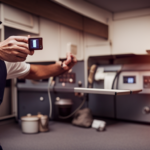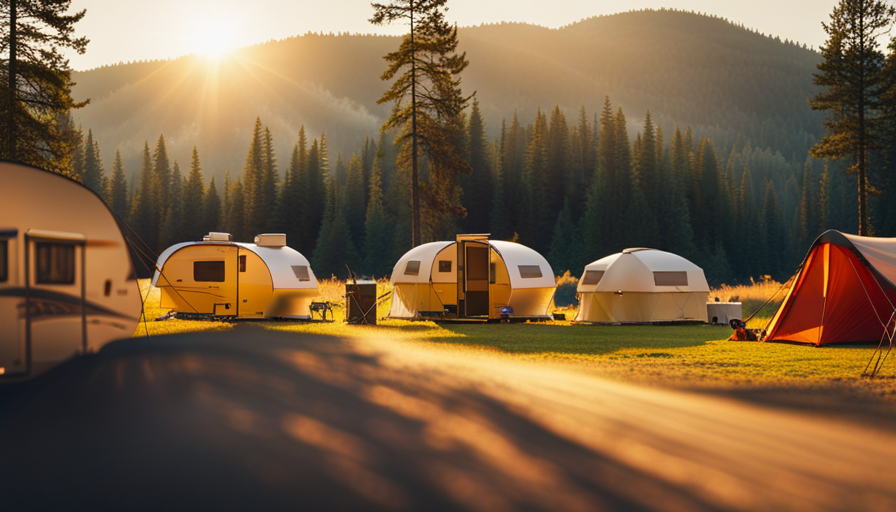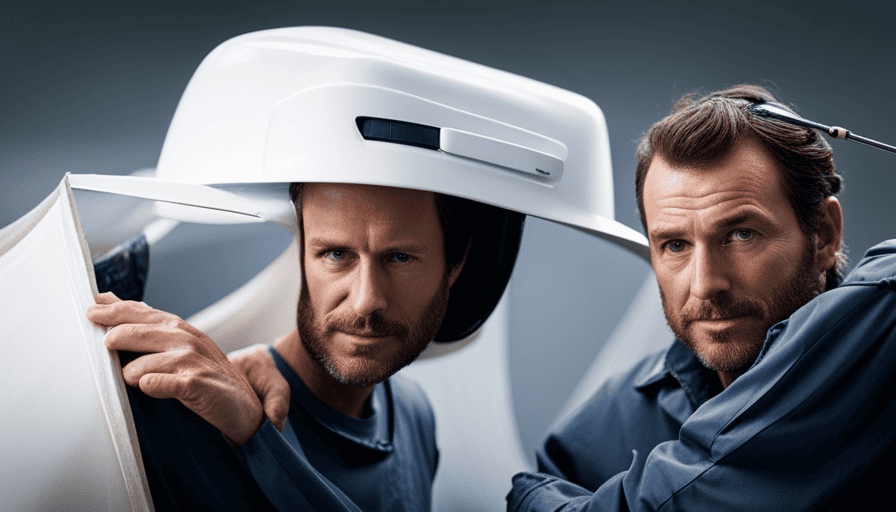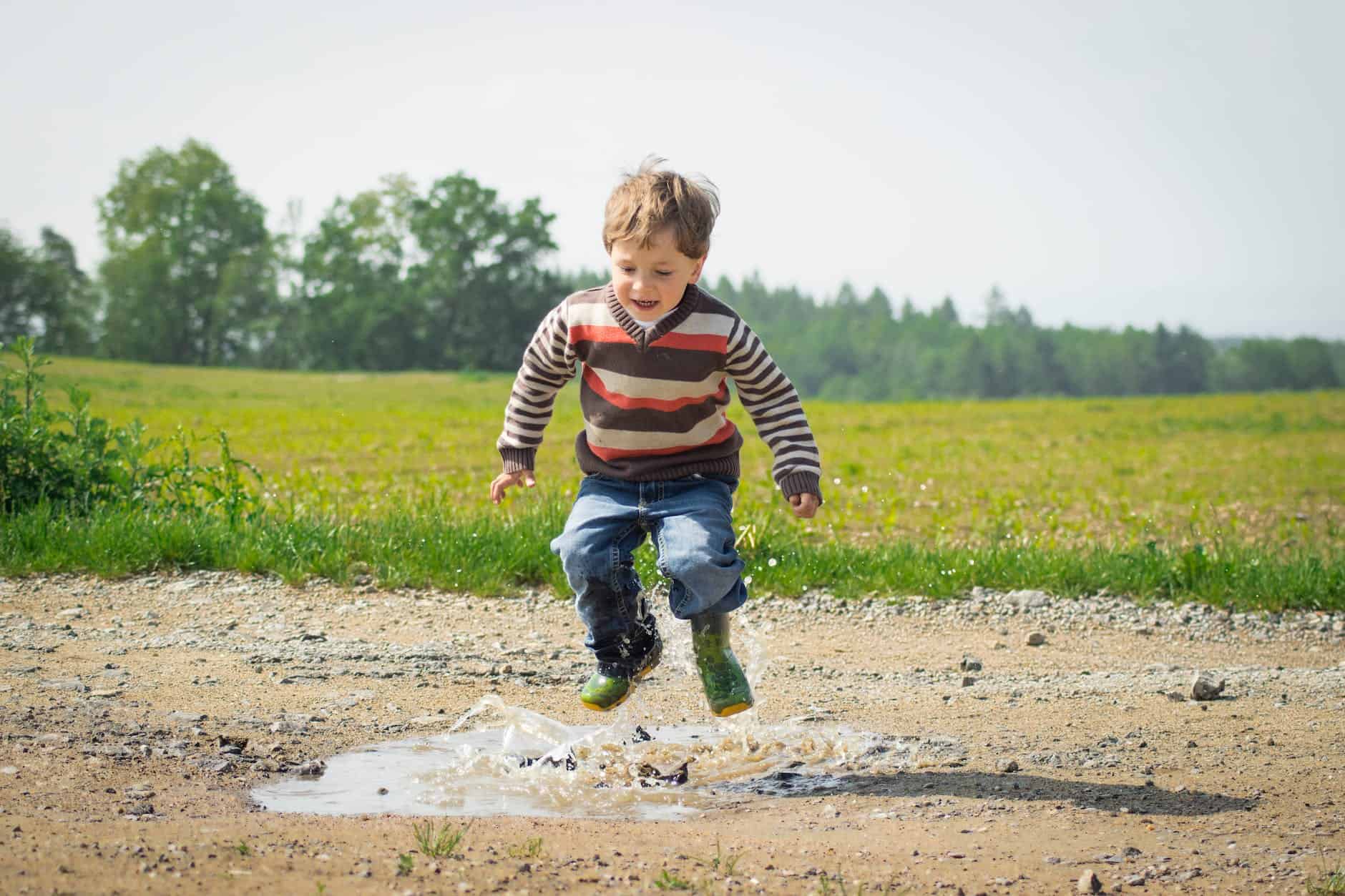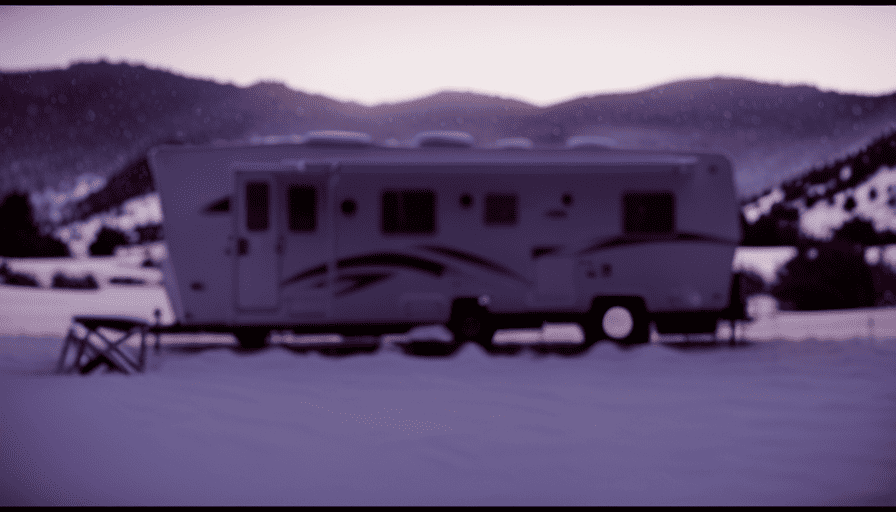When it comes to camping, there is no comparison to the freedom and simplicity of setting off on an adventure in a camper. The open road, the beauty of nature, and the comfort of your own portable home – for many, it is the ultimate dream.
But amidst all the excitement, it’s important to remember that there are potential dangers lurking in the shadows. One of the most insidious threats is carbon monoxide, a colorless and odorless gas that can be deadly if not properly managed.
In this article, we’ll explore the various causes of carbon monoxide in a camper, from faulty appliances to poor ventilation. We’ll also discuss the importance of regular maintenance, safe camping practices, and emergency preparedness.
By understanding the risks and taking necessary precautions, we can ensure that our camping adventures remain safe and enjoyable for all. So, let’s dive into the world of carbon monoxide and discover how we can stay one step ahead of this silent killer.
Key Takeaways
- Faulty appliances in campers can leak carbon monoxide, leading to poisoning.
- Poor ventilation in campers can result in carbon monoxide buildup and symptoms ranging from mild to severe.
- Regularly checking and maintaining appliances, heating systems, and ventilation systems is crucial to prevent carbon monoxide leaks.
- Installing carbon monoxide detectors in campers can provide an early warning of dangerous levels and help prevent incidents.
Understanding the Dangers of Carbon Monoxide
Understanding the dangers of carbon monoxide can be a matter of life or death, so it’s crucial to stay informed. Carbon monoxide is a colorless, odorless gas that can be produced by various sources, such as faulty appliances or engines. When inhaled, it binds to the hemoglobin in our blood, preventing oxygen from being carried throughout the body. This can lead to carbon monoxide poisoning, which can have severe consequences if not recognized and treated promptly.
The symptoms of carbon monoxide poisoning can be subtle and easily mistaken for other illnesses. Headaches, dizziness, nausea, and confusion are common initial signs. As exposure continues, more severe symptoms like chest pain, shortness of breath, and loss of consciousness may occur. It is essential to recognize these symptoms and seek immediate medical attention if carbon monoxide poisoning is suspected.
Furthermore, long-term exposure to carbon monoxide can have lasting effects on our health. Studies have shown that chronic exposure can lead to cognitive impairments, cardiovascular problems, and even death. This highlights the importance of preventing carbon monoxide buildup in enclosed spaces, such as campers.
Understanding the dangers of carbon monoxide is essential for ensuring our safety while camping. By recognizing the symptoms of carbon monoxide poisoning and being aware of the long-term effects of exposure, we can take necessary precautions to prevent any harm.
Transitioning into the next section, we will now explore the relationship between faulty appliances and carbon monoxide buildup.
Faulty Appliances and Carbon Monoxide Buildup
To prevent a dangerous buildup of carbon monoxide in your camper, check your appliances regularly for faults and make sure they’re in proper working condition. Here are four important reasons why this is crucial:
-
Carbon Monoxide Poisoning: Faulty appliances can leak carbon monoxide, a colorless and odorless gas that can be deadly when inhaled. Regularly checking for faults ensures that any potential leaks are identified and addressed promptly.
-
Symptoms of Carbon Monoxide Poisoning: Carbon monoxide poisoning can cause symptoms such as headaches, dizziness, nausea, confusion, and even loss of consciousness. These symptoms can be easily mistaken for other ailments, making it important to be vigilant and regularly inspect appliances.
-
Treatment for Carbon Monoxide Poisoning: If you or someone in your camper experiences symptoms of carbon monoxide poisoning, it’s crucial to seek immediate medical attention. Treatment may involve administering high-flow oxygen and monitoring for complications such as brain damage or organ failure.
-
Importance of Proper Ventilation: Ensuring that appliances are in proper working condition also helps prevent carbon monoxide buildup due to poor ventilation. Inadequate airflow can lead to the accumulation of deadly gases inside the camper.
By regularly checking appliances for faults, you can significantly reduce the risk of carbon monoxide poisoning in your camper. However, another important aspect to consider is poor ventilation and the associated risks of carbon monoxide.
Poor Ventilation and Carbon Monoxide Risks
Imagine yourself in a stuffy room, unable to breathe in fresh air, and unknowingly surrounded by an invisible danger lurking in the shadows. This scenario is a reality for many campers who don’t prioritize proper ventilation in their recreational vehicles.
Poor ventilation can lead to carbon monoxide buildup, posing serious health risks. Carbon monoxide poisoning occurs when this odorless and tasteless gas is inhaled, preventing the body from receiving enough oxygen. Symptoms range from mild, such as headaches and nausea, to severe, including confusion and loss of consciousness. Prolonged exposure can even be fatal.
To avoid carbon monoxide poisoning, it’s crucial to ensure adequate ventilation in campers. Opening windows and roof vents can help circulate fresh air and prevent the buildup of this hazardous gas. Additionally, regular maintenance of appliances, such as heaters and stoves, is essential to ensure they’re functioning properly and not emitting excess carbon monoxide. Installing carbon monoxide detectors is another precautionary measure that can provide an early warning in case of dangerous levels.
Proper ventilation and awareness of the risks associated with carbon monoxide buildup are vital for the safety of campers. By taking these precautions, we can minimize the health effects caused by this silent threat.
Transitioning into the subsequent section about the proper use of fuel-burning devices, it’s important to understand the steps one can take to prevent carbon monoxide buildup in campers.
Proper Use of Fuel-Burning Devices
Using fuel-burning devices safely is key to ensuring an enjoyable camping experience with minimal health risks. When it comes to fuel safety and carbon monoxide prevention, there are several important factors to consider:
-
Regularly inspect and maintain your fuel-burning devices: This includes checking for any leaks or damage, ensuring proper ventilation, and cleaning or replacing filters as needed. Regular maintenance helps to ensure that these devices operate efficiently and safely.
-
Use fuel-burning devices in well-ventilated areas: Proper ventilation is crucial to prevent the buildup of carbon monoxide. Always use fuel-burning devices in well-ventilated areas, such as open windows, doors, or vents. This helps to dissipate any carbon monoxide that may be produced.
-
Never use fuel-burning devices for heating or cooking inside your camper: Using fuel-burning devices for heating or cooking inside a camper can lead to a dangerous buildup of carbon monoxide. Always use these devices outside the camper, away from any openings or vents.
By following these fuel safety guidelines, you can significantly reduce the risk of carbon monoxide poisoning and ensure a safe camping experience. However, it’s also important to regularly maintain and inspect your camper to further minimize any potential risks.
Transitioning into the next section, let’s explore the importance of regular maintenance and inspections for camper safety.
Regular Maintenance and Inspections
Regular maintenance and inspections are the lifeblood of a camper, like oil changes are to a car, ensuring its continued safe and reliable operation. To maintain a safe environment and prevent carbon monoxide buildup, there are certain maintenance tips and an inspection checklist that should be followed.
Firstly, it’s crucial to regularly check and clean the camper’s ventilation systems. This includes inspecting the exhaust vents and ensuring they’re clear of any debris or obstructions. Additionally, the camper’s fuel-burning appliances, such as the stove, heater, and generator, should be inspected for any signs of damage or malfunction. Regularly cleaning and servicing these appliances not only improves their efficiency but also reduces the risk of carbon monoxide leakage.
Moreover, it’s important to inspect the camper’s fuel-burning devices for proper installation and ventilation. This involves checking the connections, hoses, and exhaust systems for any leaks or damage. Any issues should be promptly addressed and repaired by a qualified professional.
Regular maintenance and inspections are crucial in preventing carbon monoxide buildup and ensuring the safety of everyone inside the camper. By following these maintenance tips and inspection checklist, campers can enjoy their adventures while minimizing the risk of carbon monoxide exposure.
Transitioning to the importance of carbon monoxide detectors, these devices act as an additional layer of protection and should be installed in every camper.
Importance of Carbon Monoxide Detectors
Make sure you have carbon monoxide detectors installed in your camper to provide an extra layer of protection and ensure the safety of everyone inside. Carbon monoxide poisoning is a serious threat that can occur if this odorless and colorless gas builds up to dangerous levels in an enclosed space like a camper. It’s important to be aware of the symptoms of carbon monoxide poisoning, such as headache, dizziness, nausea, confusion, and even loss of consciousness. If you or anyone in your camper experiences these symptoms, it’s crucial to seek immediate medical attention.
Treatment for carbon monoxide poisoning typically involves removing the affected person from the source of exposure and providing them with oxygen. In severe cases, hyperbaric oxygen therapy may be necessary. Prompt treatment is essential to prevent long-term complications or even death.
Now, let’s transition into the subsequent section about safe camping practices to prevent carbon monoxide exposure. By following these practices, you can minimize the risk of carbon monoxide buildup in your camper and ensure the safety of everyone on board.
Safe Camping Practices to Prevent Carbon Monoxide Exposure
To ensure the safety of everyone on board, it’s crucial to follow safe camping practices and take proactive measures to prevent exposure to carbon monoxide while enjoying your camping trip.
Preventing CO exposure should be a top priority, as this colorless and odorless gas can be extremely dangerous and even fatal in high concentrations. Camping safety measures can significantly reduce the risk of carbon monoxide poisoning.
First and foremost, it’s essential to never use fuel-burning appliances, such as stoves, grills, or generators, inside the camper or any enclosed space. These devices produce carbon monoxide as a byproduct of combustion, and using them indoors can quickly lead to dangerous levels of the gas. Instead, always use these appliances outside, ensuring they are at least 20 feet away from the camper.
Furthermore, regular maintenance of all camping equipment is crucial. Make sure that the camper’s ventilation system is in good working condition, and regularly check for any leaks in the exhaust system or other potential sources of carbon monoxide. Additionally, installing carbon monoxide detectors in the camper is a wise precautionary measure, as they can alert you to the presence of the gas even before it reaches harmful levels.
By following these safe camping practices and taking proactive measures to prevent exposure to carbon monoxide, you can significantly reduce the risk of carbon monoxide poisoning during your camping trip. Educating yourself and others on carbon monoxide safety is the next crucial step in ensuring a safe and enjoyable camping experience.
Educating Yourself and Others on Carbon Monoxide Safety
One important aspect of camping safety is ensuring that you and your fellow campers are well-informed about the potential dangers and precautions related to carbon monoxide exposure. Carbon monoxide is a colorless, odorless gas that can be produced by various sources in a camper, such as generators, stoves, and heaters.
To prevent carbon monoxide poisoning, it’s crucial to educate yourself and others on carbon monoxide safety. Here are three key subtopics to consider:
-
Recognizing the symptoms of carbon monoxide poisoning:
- Headaches
- Nausea or vomiting
- Dizziness or confusion
-
Proper ventilation and equipment maintenance:
- Ensure that all camping equipment is properly installed and maintained.
- Keep camper windows and vents open to allow fresh air circulation.
- Never use fuel-burning appliances inside the camper.
-
Using carbon monoxide detectors:
- Install carbon monoxide detectors in your camper.
- Test detectors regularly to ensure they’re functioning properly.
- Know the sound of the carbon monoxide detector’s alarm.
By being aware of these prevention methods and symptoms, you can help keep yourself and your fellow campers safe from carbon monoxide exposure. It’s important to be prepared for any emergencies that may arise. In the next section, we’ll discuss emergency preparedness for carbon monoxide incidents.
Emergency Preparedness for Carbon Monoxide Incidents
Be prepared for any emergencies that may arise by familiarizing yourself with the necessary steps to take in case of a carbon monoxide incident, ensuring the safety of yourself and your fellow campers.
In an emergency response situation, it’s crucial to be able to recognize the symptoms of carbon monoxide poisoning. These symptoms can vary depending on the level of exposure and may include headache, dizziness, nausea, confusion, and even loss of consciousness. If you suspect carbon monoxide poisoning, it’s important to immediately move to an open area with fresh air and call for emergency assistance. Don’t attempt to treat the symptoms yourself.
Carbon monoxide is a silent killer, as it’s odorless and colorless, making it difficult to detect without proper equipment. Therefore, prevention is key to avoiding such incidents. Regularly inspecting and maintaining your camper’s heating system, fuel-burning appliances, and ventilation system is essential. Additionally, installing carbon monoxide detectors can provide an early warning system in case of a leak.
By taking these precautions, you can ensure a safe camping experience. For further information and assistance, there are various resources available that provide detailed guidelines on carbon monoxide safety.
Resources for Further Information and Assistance
Transitioning from the previous subtopic of emergency preparedness for carbon monoxide incidents, we now turn our attention to the importance of having access to resources for further information and assistance. In order to effectively prevent carbon monoxide poisoning in a camper, it is crucial to be well-informed about the potential sources and risks associated with this deadly gas. By familiarizing ourselves with the various resources available, we can take proactive measures to ensure our safety.
One valuable resource is the Centers for Disease Control and Prevention (CDC) website, which offers comprehensive information on carbon monoxide, including its sources, symptoms, and prevention strategies. The CDC provides guidelines for installing and maintaining carbon monoxide detectors, as well as tips for recognizing the signs and symptoms of poisoning. Additionally, they offer informative videos and brochures that can be accessed and shared with others.
Other resources include local fire departments and emergency management agencies. These organizations often provide educational materials, training programs, and community outreach initiatives focused on carbon monoxide safety. By taking advantage of these resources, campers can gain a better understanding of how to prevent carbon monoxide incidents and protect themselves and their loved ones.
Being equipped with the necessary knowledge and resources is crucial for preventing carbon monoxide poisoning in a camper. By utilizing the available resources and recognizing the symptoms of exposure, we can take proactive steps to ensure our safety and the safety of those around us.
Frequently Asked Questions
How can I tell if there is carbon monoxide present in my camper?
Signs and symptoms of carbon monoxide (CO) presence in a camper can include headache, dizziness, nausea, confusion, and weakness. To detect CO, it’s essential to have CO alarms installed in your camper. These alarms are designed to detect the presence of CO and alert you with a loud noise. Regularly check the alarms to make sure they’re functioning properly.
Promptly addressing any signs of CO and having reliable detection systems can help prevent potential health risks.
Can carbon monoxide build up even if my appliances are working properly?
Yes, carbon monoxide can still build up in a camper even if the appliances are working properly. This is why it’s crucial to have carbon monoxide detectors installed. These detectors can alert us to dangerous levels of carbon monoxide in the air.
Additionally, proper ventilation is of utmost importance to prevent the accumulation of this deadly gas. Adequate airflow helps to dissipate carbon monoxide and maintain a safe environment inside the camper.
Are there any natural sources of carbon monoxide in a camper?
In a camper, there can be natural sources of carbon monoxide, which can pose serious health risks. These sources include gas-powered appliances, such as stoves and heaters, and even burning firewood. Exposure to carbon monoxide can lead to symptoms like headaches, dizziness, and nausea, and in severe cases, it can even be fatal. It’s crucial to ensure proper ventilation and regular maintenance of appliances to prevent the buildup of this harmful gas.
How often should I have my camper’s ventilation system inspected?
When it comes to replacing your camper’s ventilation system, it’s recommended to have it inspected annually by a professional. Regular inspections ensure that the system is functioning properly and effectively removing harmful gases like carbon monoxide.
Signs of a faulty ventilation system may include a strong smell of exhaust, condensation buildup, or difficulty in maintaining a comfortable temperature inside the camper. It’s important to prioritize the safety of yourself and others by addressing any ventilation system issues promptly.
What steps can I take to prevent carbon monoxide exposure while camping?
To prevent carbon monoxide exposure while camping, we must take a few important steps. Firstly, it’s crucial to install carbon monoxide detectors in our campers. These devices can save lives by alerting us to dangerous levels of this silent killer.
Additionally, we should ensure proper ventilation in our campers and never use fuel-burning appliances indoors. Following these precautions will help keep us safe from the deadly effects of carbon monoxide.
Can Carbon Monoxide in a Camper Affect the Dimming and Brightening of Lights?
Carbon monoxide is a silent killer that can seep into a camper through faulty equipment or poor ventilation. It not only poses a serious health risk, but it can also impact the electrical system. The presence of this deadly gas can disrupt the flow of electricity, leading to irregular fluctuations in camper lights. Understanding the causes of camper lights dimming and brightening is crucial for maintaining a safe and functional environment inside your camper.
Can a Lack of Power in a Camper Cause an Increase in Carbon Monoxide Levels?
Yes, power issues in camper can lead to an increase in carbon monoxide levels. When the camper’s power system is not functioning properly, it can affect the proper ventilation and operation of appliances like the heater or stove, leading to a buildup of carbon monoxide. It’s essential to address power issues in camper to ensure safety.
Conclusion
In conclusion, it’s crucial for campers to be aware of the dangers of carbon monoxide and take necessary precautions to prevent its buildup.
One interesting statistic to consider is that according to the Centers for Disease Control and Prevention (CDC), carbon monoxide poisoning is responsible for an average of 430 deaths each year in the United States alone. This statistic highlights the importance of understanding and practicing carbon monoxide safety while camping, as it can truly be a matter of life and death.
By following proper maintenance, ventilation, and safe camping practices, campers can significantly reduce the risk of carbon monoxide exposure.


